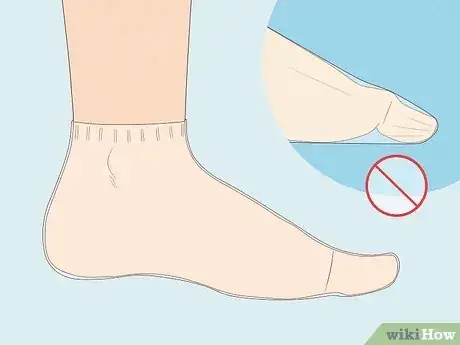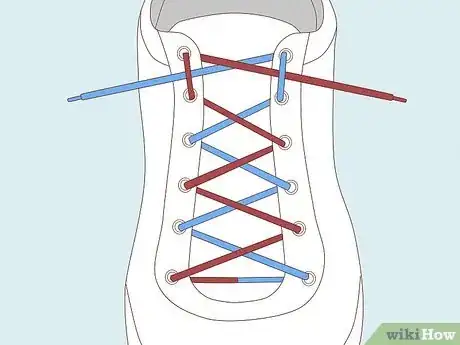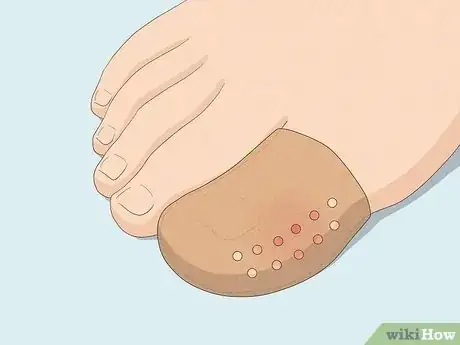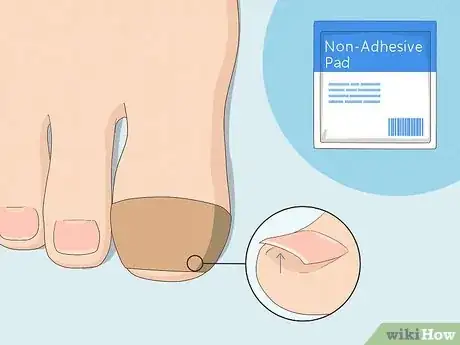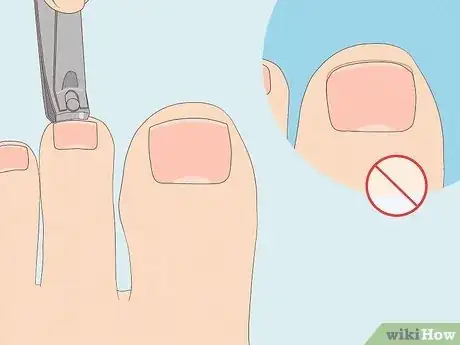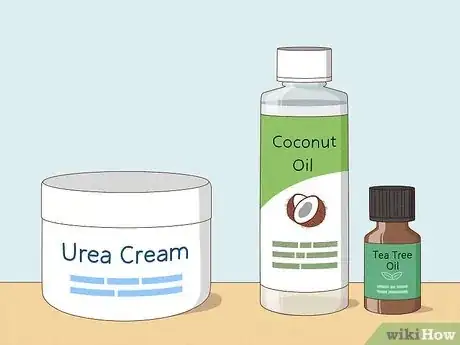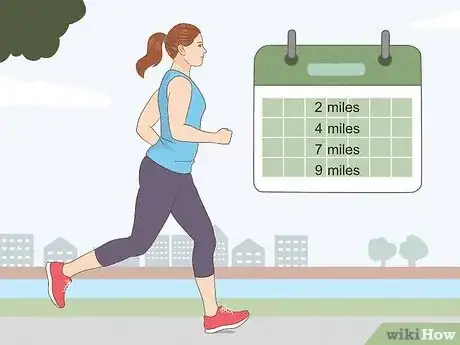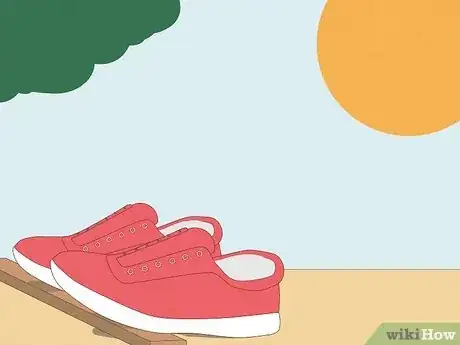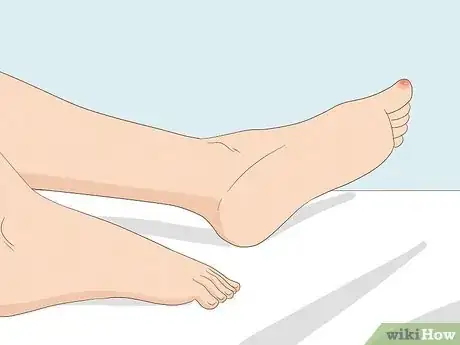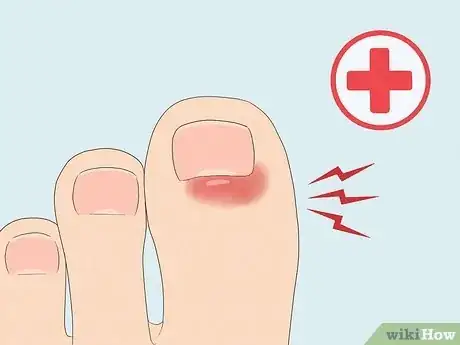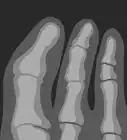This article was co-authored by Catherine Cheung, DPM and by wikiHow staff writer, Hunter Rising. Dr. Catherine Cheung is a board certified Podiatrist based in San Francisco, California. Dr. Cheung specializes in all aspects of foot and ankle care, including complex reconstruction. Dr. Cheung is affiliated with the Brown & Toland Physicians and the Sutter Medical Network. She earned a DPM from the California College of Podiatric Medicine, completed her residency at the Encino Tarzana Medical Center, and completed a fellowship at the Kaiser Permanente San Francisco Medical Center. She is board certified by the American Board of Podiatric Surgery.
There are 10 references cited in this article, which can be found at the bottom of the page.
This article has been viewed 5,505 times.
Have your toenails felt a little sore or looked bruised after you get back from a run? Runner’s toe is when your toenail bumps against your shoe and leaves a blister under the nail, but it’s easy to prevent with a few simple changes to your routine. We’ll cover the best ways to keep your nails safe when you’re out on a run and how to care for them so they stay healthy.
Steps
Choose running shoes that fit properly.
-
Shoes that are too small or large stress your nails. When you choose your running shoes, try them on before you buy them. Make sure there’s about a thumbnail’s distance between your toes and the fronts of the shoes.[1] X Research source Then, check that your running shoes hug the sides of your feet since you could get runner’s toenail if they’re too wide.[2] X Research source
- Your feet can slip forward and jam your toenails into the fronts of your shoes if they’re too large.
- Shoes that fit too tightly cram your feet at the fronts of your shoes so you feel the impact more with each stride, which could lead to bruising and blisters that turn your toenails black.
Wear socks that fit well.
-
Socks that are too tight put pressure on your nails. A good pair of running socks also adds a layer of cushion between your nails and shoes so they don’t hurt after a run.[3] X Research source Choose socks that are made from a light cotton or synthetic blend since they’ll wick away sweat and moisture.
- If you leave your socks on when they’re damp, it could lead to foot or nail fungus.
- Try on your running shoes with your socks to make sure you still have space between the end of your toes and the front of your shoe.
Tie a lace lock into your shoes.
-
Lace locks keep your heels from slipping forward while you’re running. When your feet slide forward, your nails take the force of the impact with each step and get bruised. You can tie lace locks with any pair of shoelaces.[4] X Research source
- Lace your shoes with a criss-cross pattern up to the second-highest eyelet on each side of the shoe.
- Take the left lace and feed it through the top eyelet on the left side of the shoe to form a loop.
- Feed the right lace through the top eyelet on the right side of the shoe to make a second loop.
- Pull the left lace through the right loop, and pull the right lace through the left loop.
- Tie a bow knot to keep your laces secured.
Use silicone toe pads.
-
Silicone pads can cushion the impact on your toenails. Silicone toe pads slip over your toe so you have an extra layer between your nail and the shoe. Just slide the toe pads over the toes that are sore or bruised before you go on a run.[5] X Research source
Wear non-adhesive dressings for loose toenails.
-
Non-adhesive dressings will keep your toenail safe without pulling it. If the pressure from running or a blister has made your nails feel loose, wrap a non-adhesive dressing around it before you put on socks. Change the dressing every day or when it gets dirty.[6] X Research source
- It’s safe to put a non-adhesive bandage directly on your toenail, but avoid dressings with adhesive since they could painfully pull the nail out of the nail bed.
Trim your toenails every 3 or 4 weeks.
-
Long nails are more likely to get damaged or ingrown. Cut your nails with a pair of clippers straight across following the natural shape of the nail. Keep your nails short so they don’t extend past the ends of your toes.[7] X Research source
- Over-trimming your nails could lead to ingrown toenails.
- You can trim the edge of a loose nail if it gets caught on your socks, but only if it doesn’t cause you pain.[8] X Research source
Moisturize your toenails.
-
Moisturizing your nails makes them healthier and more resistant to injury. Before you go on a run, rub some urea lotion onto your nails for a deep, penetrative treatment that strengthens your nails. You could instead use coconut oil mixed with a few drops of tea tree oil to help fight against fungus.[9] X Research source
Work your way up to longer runs.
-
You’re less likely to stress your toenails if you gradually increase your distance. Rather than going for a long-distance run right away, start off slow at a comfortable distance.[10] X Research source As your toenail gets used to the impact of running, try increasing your distance or time by 10% each week.[11] X Research source
Let your feet breathe after a run.
-
Keeping your socks and shoes on could lead to fungal growth. Once you get back home from your run, take off your socks and shoes right away. That way, any sweat has a chance to dry out and you’re less likely to develop nail fungus that could weaken your nail.
- If your feet are sweaty or still feel damp, wash and dry them thoroughly.
Dry your shoes between runs.
-
Running in wet shoes increases chances of fungus and weak nails. Shoes get sweaty when you run and the dark, moist environment is perfect for fungus and bacteria. Leave your shoes out in the sun or near a vent after a run so they can dry out completely.[12] X Research source
- Keep a second pair of running shoes that you can wear while the other pair is drying.
Take a break from running if you’re in pain.
-
Giving yourself a little time to heal prevents you from making an injury worse. When you get a blood blister under your nail, it could hurt or pop when you keep putting pressure on it. If you feel slight pain when you step down with your foot, take care of your nails by resting for a day or two to help the discolored nail heal properly.[13] X Research source
- If a blood blister pops, it could make your nails bloody or make your toenail feel loose.
See a doctor if you have severe pain or injuries.
-
A doctor can safely treat any issues that you’re dealing with. If you’re feeling a lot of pain from a blister under your toenail or a loose toenail, contact your doctor and set up an appointment. They’ll be able to prescribe medication, drain a blister, or safely remove the nail to help speed up your recovery.[14] X Research source
- Avoid trying to drain a blister or remove a nail at home since it can be painful and you’re more at risk of infection.
You Might Also Like
 How to Care for a Broken Toenail (Plus When to See a Doctor)
How to Care for a Broken Toenail (Plus When to See a Doctor)
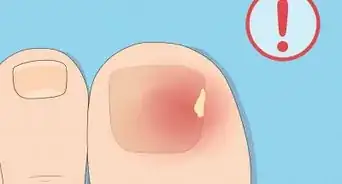 Guide to Removing, Cleaning, and Caring for Dead Toenails
Guide to Removing, Cleaning, and Caring for Dead Toenails



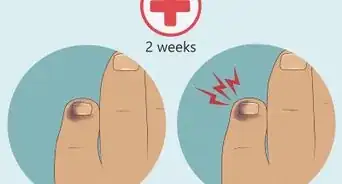
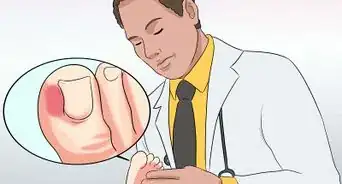
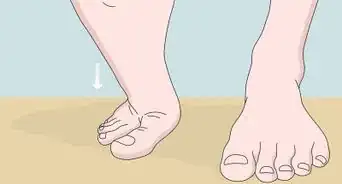
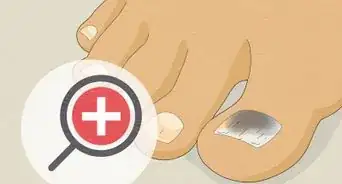 The Best Ways to Cut and Treat Toenails with Fungus
The Best Ways to Cut and Treat Toenails with Fungus




References
- ↑ https://advancedfootankle.com/blog/runners-with-black-toenails/
- ↑ https://www.getfitkpsf.com/get-active/black-toenail-what-is-it-and-how-do-i-prevent-it/
- ↑ https://palermophysio.ca/black-and-blue-toenails-from-runners-to-weightlifters-and-the-high-heel-wearer-in-between/
- ↑ https://footfriend.co.uk/walkers-runners-black-toenails-preventable/
- ↑ https://www.runningshoesguru.com/content/the-black-toenail-a-runners-right-of-passage-everything-you-ought-to-know/
- ↑ https://www.spectrumfootclinics.ie/blog/2020/7/1/my-toenail-is-loose-what-do-i-do
- ↑ https://rothmanortho.com/files/Rothman_FootAnkle_eBook.pdf
- ↑ https://www.spectrumfootclinics.ie/blog/2020/7/1/my-toenail-is-loose-what-do-i-do
- ↑ https://www.afacutah.com/blog/how-to-take-care-of-your-feet-to-avoid-ingrown-toenails
- ↑ https://palermophysio.ca/black-and-blue-toenails-from-runners-to-weightlifters-and-the-high-heel-wearer-in-between/
- ↑ https://www.runningshoesguru.com/content/the-black-toenail-a-runners-right-of-passage-everything-you-ought-to-know/
- ↑ https://www.runnersblueprint.com/dry-running-shoes/
- ↑ https://advancedfootankle.com/blog/runners-with-black-toenails/
- ↑ https://youtu.be/mw_KhDyDFKw?t=72
About This Article


